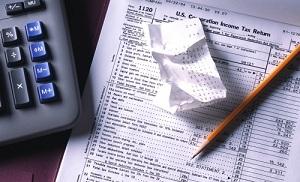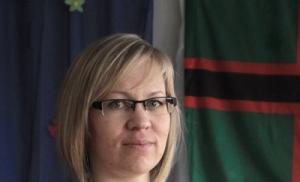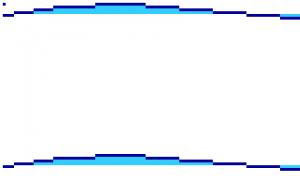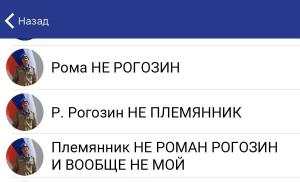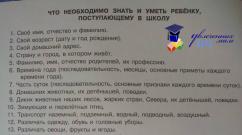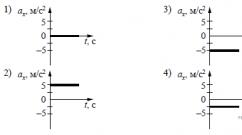Preparing for school 6 years of occupation. Manuals for preparing children for school
When parents start to think about preparing a child for school, many of them go to the bookstore to buy the necessary manuals. Already in the store, they understand that school preparation manuals there are a lot, and it can be very difficult to decide which one to stop in a few minutes. Here's an overview of some of the guides to help you get your child ready for school.
O. Kholodova "Three months before school: Tasks for the development of cognitive abilities" (5-6 years), Federal State Educational Standard
From the very first pages of the workbook O. Kholodovoy: Three months before school: Tasks for the development of cognitive abilities (5-6 years) FSES very endeared to myself. You can buy it in Maze and Ozone... Manual A4 format, paperback, 80 pages.
At the very beginning, a short list of those entering the first grade is offered, and the principle of work on this notebook is also described.
The manual is intended for lessons with children 5-6 years old for the successful preparation of the child for admission to grade 1. Indeed, the tasks presented in this notebook will help develop memory, attention, perception, thinking, form correct speech, and improve graphic skills.
 To enlarge the image - click on it with the mouse
To enlarge the image - click on it with the mouse The manual presents 36 lessons, which have a certain structure. If we consider what a future first grader should be able and know before entering school, then studying with this manual, it is quite possible to prepare the child and eliminate any gaps. Each lesson (and it takes two pages - a spread) consists of three blocks: answering, doing and drawing, but, unfortunately, these blocks are not connected in any way, there is no single game moment.
In the block Answer a range of issues is presented that helps to increase the level of general knowledge, outlook. For example, what color is a hare in winter? find out by description: is it food, white, sweet, solid? etc. Also, by answering the questions from this block, the child learns to give complete answers. 
Into the block Performer included tasks for the development of attention, memory, thinking (for example: find the differences, find the same objects, find an extra object, complete the missing parts, paint according to the pattern, restore the sequence, etc.). There are also tasks that help determine the level of the child's lexical stock and determine how much the child has developed logic. The authors recommend to set aside 15 - 20 minutes for work in this block. 
Block Drawing completely aimed at the development of motor skills, as well as the ability to perceive material by ear. There are also graphic dictations of varying complexity and pattern connections, and dotted lines. This block helps to prepare the child to write dictation.
All tasks in this notebook are very diverse, and the material is gradually becoming more complicated.
The final task 36 can be used as a mini-test to determine the level preparing your child for school.
The only drawback of this manual is that very thin paper was used, through which the following pages are visible. This can distract your child from completing the assignment. The authors also suggest that after the Exercise block, the child should rest for 1-2 minutes, doing a warm-up for fingers or gymnastics for the eyes. But I did not find small rhymes or recommendations. Maybe it was worth adding another Otdyhaka block.
Zhukova O.S. "We teach to count, read and think of a future excellent student"
 This is one of the books in the series "The Club of Happy Preschool Children", aimed at preparing a child for school.
This is one of the books in the series "The Club of Happy Preschool Children", aimed at preparing a child for school.
This book ( Maze), (Ozone) can be used as a notebook, since there are tasks to paint, circle unnecessary ones. The pages are quite dense, decorated in the same style, possibly very large margins that can be distracting. The book, which is 80 pages, contains sections: learning to read, learning to count, learning to think. Let's take a closer look at each.
Catching up on the section "Learning to read" your kid will study first of all, try to mold this letter from plasticine, find it in words. It is somewhat unclear to me at what pace it is proposed to work, since some letters take up a whole page, while others are found two per page, and they do not have a common characteristic.

For example, the letters D and E, B and Y (consonant and vowel) or L and P (similar only in spelling, but won't the child confuse them later?). Those who are already familiar with Zhukova's ABC will also come across "treadmills" here. In my opinion, they help well to teach a child to merge syllables. 
In chapter "Learning to count" presents tasks aimed at mastering counting in the forward and reverse order, working out the concepts of "previous" and "next" number, number series, to consolidate the concepts of geometric shapes. There are tasks for the development of logical thinking.

Chapter "Learning to think" contains tasks such as:
- pick up opposite words;
- exclude an extra word;
- guess the riddles.
The child will recognize or review topics such as wild and, birds, mothers and cubs, vegetables and fruits. Conveniently, each spread (2 pages) corresponds to one topic. In my opinion, the tasks are quite simple, my son (and he is 4.5 years old) and I have already gone through a lot and, most likely, he will not be interested.

Of the minuses, the tasks in this book seemed to me too simple, but if you are just starting to prepare for school, then it is quite possible to use this manual as an addition to your studies or to test any knowledge.
Do you want to play with your child easily and with pleasure?
L.G.Peterson, N.P. Kholina "One is a step, Two is a step ... Mathematics for children 6 - 7 years old"
 Probably, many are already familiar with the manual for preschoolers. L.G.Peterson, N.P. Kholinoy "One is a step, Two is a step ... Mathematics for children 6 - 7 years old"
(Maze and Ozone)
Probably, many are already familiar with the manual for preschoolers. L.G.Peterson, N.P. Kholinoy "One is a step, Two is a step ... Mathematics for children 6 - 7 years old"
(Maze and Ozone)
The manual has 64 pages, in which all the material is divided into 32 lessons. Each lesson has 6 tasks, some have 7 (depending on the difficulty). The material gets more complicated from lesson to lesson. Each lesson is highlighted with certain color fields, which is very convenient.
The manual presents many different tasks aimed at mastering counting within 10, on the ability to navigate in space, on consolidating such concepts as the shape of objects, quantity, size.
Two to three lessons are allocated for the study of one topic, which gives the child a good understanding of the topic. The tasks in the lesson are arranged so that your child does not have time to get tired.
 First, he is invited to answer questions, proving his opinion, then paint, count something, continue the pattern, etc. And he performs all these tasks in a playful way, "helping" some heroes. Either he picks up the right ribbons for Dunno's hat, then he helps the bees to collect honey, then he helps Piglet find the right photo and the like.
First, he is invited to answer questions, proving his opinion, then paint, count something, continue the pattern, etc. And he performs all these tasks in a playful way, "helping" some heroes. Either he picks up the right ribbons for Dunno's hat, then he helps the bees to collect honey, then he helps Piglet find the right photo and the like. 
In this notebook you will find many tasks for the development of logical thinking, creative abilities. Working with your child using this manual, you will teach him to analyze, compare, generalize, classify.
Peterson L.G., Kochemasova E.E. “Problems in crosswords. Mathematics for children 5-7 years old "
 Another guide that can also come in handy in preparing for school is Peterson L.G., Kochemasova E.E. “Problems in crosswords. Mathematics for children 5-7 years old "
(Maze).
Another guide that can also come in handy in preparing for school is Peterson L.G., Kochemasova E.E. “Problems in crosswords. Mathematics for children 5-7 years old "
(Maze).
Now, when entering school, it is necessary that the child has already counted within 10, and somewhere he can solve simple problems. This manual, designed for children 5 - 7 years old, contains just a lot of different tasks.
The tasks in the book are presented in the form of crosswords, performed in a somewhat unusual manner. As a question, a mathematical problem for addition or subtraction within 10 is given, and the answer must be written in a crossword puzzle, writing down the numbers in words (for example, ONE). Conveniently, at the beginning of the book there is a sample of block letters. When solving the crossword puzzle completely in the selected cells, the child will be able to read the encrypted word. I really liked the fact that the crosswords are all thematic, and the tasks are related. There are also bright illustrations for each topic on the page.
In total, the book contains 33 crossword puzzles, and at the end, answers are given for each. 
In addition to math crosswords, the manual offers:
- various labyrinths;
- shading;
- tracing drawings along the contour;
- copying drawings by cells;
- tasks for orientation in space;
- sequencing assignments and many others.

Studying this book, your child will analyze, compare, draw general conclusions, see certain patterns or their violation, suggest and justify their options.
The book will be interesting and useful for practicing the ability to solve problems not only in preparation for school, but also at the stage of the first grade.
O. V. Uzorova "350 exercises to prepare children for school: games, tasks, the basics of writing and drawing"
 In this tutorial ( Maze) presents 50 lessons on 102 pages. Each lesson has a specific structure, 7 tasks in total, which become progressively more difficult.
In this tutorial ( Maze) presents 50 lessons on 102 pages. Each lesson has a specific structure, 7 tasks in total, which become progressively more difficult.
The manual presents a variety of practical tasks aimed at developing attention, memory, logic, thinking outside the box. There are a lot of tasks for setting the hand: draw, color, finish drawing, repeat the drawing, glue, cut out small objects and even sew.
The only confusing thing is that the paper of this manual is not only gray, but also very thin, and it seems to me impossible to complete some tasks. For example, sew on a button. It is very difficult for a 6-7 year old child to sew a button on fabric, and even more difficult on thin paper, which can tear quickly. Also, in some tasks where it is necessary to cut, there are quite small details. Such details are sometimes difficult for a second grader to cut out.
In general, if you are looking for a manual to prepare your hand for writing, then this notebook will help you.

These are just some of the benefits that are offered to us in stores. It would be interesting to know what tutorials you use when preparing the child for school.
When choosing a manual for preparing your child for school, you should focus on the knowledge and abilities of the child, because the manual should captivate not only you, but also the future first grader.
And remember, your activities should be interesting and entertaining for your child. As Lev Landau says "Do everything with enthusiasm - it terribly adorns life."
When a child is prepared for learning, he takes the initiative in his studies and extracurricular activities, he will not have any difficulties in the process of studying and communicating with classmates. This article will help you prepare your child for school at home, determine the level of his knowledge and motivational readiness.
Parents of future first graders are worried about whether their child is ready for school? After all, it is very important not only to send the baby to the first grade, but to do it on time - when the child is ready to attend an educational institution morally and sufficiently developed for this.
A mistake in determining a child's readiness can be costly: unwillingness to attend an educational institution, refusal to learn lessons, depression, uncontrollable behavior - all this will be demonstrated by a first-grader who is at school “at the wrong time”. To avoid troubles and prevent psychological trauma in a child, parents should be very attentive to the issue of compliance of the level of his knowledge and skills with modern requirements.
Requirements for preparing a child for school: a list
By now, a whole list of what a future first grader should know and be able to do has been formed:
- Confidently state your last name, first name and patronymic
- Your date of birth
- Home address
- Name of mom and dad (grandmothers, grandfathers and other relatives - optional)
- Parents' place of work
- Famous poets and writers in the country
- Holidays
- Distinguish between the concepts: "forward - backward", "right - left"
- Days of the week
- Colors and shades
- Seasons (with months)
- Traffic rules on the road
- Distinguish between domestic and wild animals, call them babies
- Name garden, forest, wildflowers
- Name migratory and wintering birds
- Distinguish fruits from vegetables
- Know the profession
- Name the types of transport and the method of its movement
- Retell what you heard
- Anwser the questions
- Compose a story from a picture
- Coming up with fairy tales
- Recite poetry by heart
- Describe from memory
- Copy text and picture
- End sentences
- Find an extra object, picture, word, letter
- Solve riddles
- Count from 0 to 10 and back
- Know the composition of numbers
- Distinguish between the concepts of "more", "less"
- Know the shapes
- Write in cells
- Know letters, distinguish them from sounds
- Determine the first and last letter (sound) in a word
- Match words for the suggested letter
- Read simple words and syllables
- Know when a sentence ends
- Trace a contour
- Hold the pen
Despite the fact that a child must learn many of these skills in elementary school, testing before entering the first grade is carried out precisely on these points.


Cognitive interest, quick reaction, out-of-the-box and logical thinking will be formed in a preschooler if you regularly conduct math classes with him in a playful way.
For these lessons to be beneficial and enjoyable for their child, parents should consider:
- child's age
- level of preparation
- ability to concentrate
- interest in classes
Math lessons- these are not monotonous examples and problems. To interest the child and diversify the mathematics lessons, the following types of tasks should be used in working with preschoolers:
- problems with geometric shapes
- math riddles
- tasks are jokes
- puzzle
IMPORTANT: Any task should be selected individually, taking into account its degree of complexity and the level of development of the child.


Math games
"Houses"... Draw 3 three-story houses, each on a separate sheet. Draw 3 windows on each floor. Draw curtains at random on some windows. Tell your child that people are already living in apartments with curtains. Ask him to populate people on the other floors so that there will be an equal number of residents on each floor. Let him finish painting the multi-colored curtains in the windows of the apartments where he put people. Then ask to count which house has more tenants.
"Drawings from geometric shapes"... Draw any geometric shape on the sheet. Ask your child to come up with a drawing using the suggested shape. If the kid did not understand the task, show, for example, how easily a circle can turn into a sun, a snowman or a car wheel.


"Connect the numbers". Ask your child to connect the numbers with lines. Explain that if he does it correctly, he will see the drawing. For younger children, use pictures with numbers up to 10, for older children, use more complex pictures with numbers up to 30 or 50.
IMPORTANT: Group activities increase the child's interest in what is happening. The sense of competition, which is highly developed in preschool age in most children, will not allow the child to be distracted.

 Game "Connect the numbers"
Game "Connect the numbers" Entertaining math questions and puzzles:
- How many legs do three cats have and how many legs do two birds have?
- How many ears are there in two mice?
- Natasha's mother has a daughter, Masha, a cat, Fluff, and a dog, Druzhok. How many daughters does mom have?
- Which is heavier: 1 kg of stones or 1 kg of fluff?
The hare has five hares
They sit on the grass with my mother.
The other hare has three
They are all white, look!
How many are three and five?
Pears fell from the branches to the ground
Pears were crying, tears dropped
Katya collected them in a basket
I gave everything to my friends in the kindergarten:
Two Pavlushka, three Seryozha,
Marinke and Arinke,
Masha, Nadya and Oksana
And one thing, of course, for mom.
Count it up quickly
How many are Katya's friends?
Five geese were flying in the sky
The two decided to dine,
And one is to take a break.
How many set off on the road?
Mother brought the mother hen
Seven chickens for a walk in the garden.
All chickens are like flowers.
Five sons, and how many daughters?
Four blue plums
They were hanging on a tree.
Children ate two plums
And how many did not have time?
IMPORTANT: Encourage the child's interest in such tasks, praise if he tries to come up with similar tasks on his own.


Preparing for school: educational reading tasks for children
Reading Is one of the most important disciplines. The better a child learns to read, the easier it will be for him to learn at school. The purpose of training- to explain to the child the principles and rules of reading, to get the preschooler to confidently read letters, syllables and short words.
IMPORTANT: Due to the fact that information is perceived by young children somewhat differently than by adults, it is necessary to teach reading only in a playful way.
Child's Reading Learning Plan simple enough:
- Memorize letters with your child in this order: all vowels, hard voiced consonants, voiceless and hissing consonants.
- Achieve fast and error-free letter definitions.
- Teach your child to read sounds, that is, pronounce the letters already familiar to him as one. Start with easy-to-read and easy-to-pronounce syllables (na, ma, la, yes) and gradually move on to more complex ones (zhu, ku, gu, fo).
- Move on to reading short words consisting of several simple syllables (ma-ma, ba-ba, o-la, cat, house).
- Make the task a little more difficult every day, enter a few difficult words.
- When your child learns to read words, move on to reading short sentences.
- After the child learns to read sentences, you can use various developmental tasks in teaching.
IMPORTANT: During classes, keep track of the purity of the pronunciation of sounds, explain where in the sentence you need to pause between words.


Find the word game... Invite your child to look for a specific word in a small, unfamiliar text. Moreover, this must be done in a certain time (for example, in one minute).
"Loudly, quietly, to myself"... Ask your child to read more quietly, now louder, now to himself. According to your instructions, he should switch from one type of reading to another as quickly as possible. Make sure that the pace of reading does not change.
"Syllables on cards"... Write the syllables on the cards so that you can form words from them. Ask your child to help the lost syllables find their friends and come together in words. Play the game daily, gradually adding new syllables.
"Vowels consonants"... Have the child name or write as many consonants and then vowels as possible in 30 seconds.
"Answers on questions". Prepare some simple text questions. Invite your child to look for answers to these questions as they read the text.
Reading with interference. Teach your child to read regardless of the environment. Play music or TV for a short while while reading. Make sure that the child continues to read, regardless of the change in the sound background.
"Letter size". Reading texts with different fonts should not be a problem for a child. To do this, offer him daily to print and read letters of different sizes on his own.
"Words are shape-shifters"... Show your child the words that change the meaning when reading them the other way around: "cat - tok", "call", etc. Explain that you should always read from left to right.
"Reading through teeth"... Complicate the usual daily reading with an unusual fun task: the child should read without opening his teeth. After reading the text, you need to retell it.
"We missed a letter"... Write 5 - 10 words familiar to him, in each of which skip one letter. Ask the prospective first grader to insert the missing letters into words.
"Similar words." Write several pairs of words similar in spelling, but different in meaning: "cat - whale", "hand - river", "house - smoke". Ask your child to read the pairs and explain the meaning of each word.
Read in a minute... Encourage your child to read the same text every day "at speed". Notice that each day he reads faster and clearer, and moves further in the allotted minute. For clarity, it is better to use an hourglass.


Sometimes children have difficulty completing developmental reading assignments. This happens for the following reasons:
- Uncertainty. To make sure that a syllable or word is read correctly, the child rereads it several times in a row.
- Scattered attention. Preschoolers quickly lose interest in, in their opinion, boring activities.
- Insufficient concentration of attention. The child cannot perceive the whole word, but concentrates attention only on the first few letters or syllables.
- Small vocabulary. The child pronounces unfamiliar words uncertainly when reading.
- Bad memory. The child does not remember letters, sounds, forgets the principle of the formation of syllables and words.
- Violations of the speech apparatus, chronic diseases of the ENT organs (otitis media, enlarged tonsils).


Video: How to teach a child to read?
Preparing for school, developing writing tasks for children
The greatest difficulties for all first-graders, without exception, arise when performing graphic assignments. This happens for three reasons:
- lack of interest in the child
- immaturity of the musculature of the hands
- inexperience
To facilitate the process of mastering writing at school, parents should start working with their child from an early age. Game developmental tasks will help to interest the preschooler.
"Labyrinth"... Invite your child to find a way out of the maze for a mouse running away from a cat, or a bunny that lags behind his mother. Using a pen or pencil, you need to show the animal the right path.
"Draw the drawing." Draw a bouquet of flowers and invite the kid to finish painting a vase for the bouquet, let him put fish in an empty aquarium, draw a door in the house. The more such tasks a child completes, the more confidently he will hold a pencil in his hands.
"Drawing by dots"... Ask your child to connect the dots together in such a way that you get a drawing. If your child has any difficulty in completing this task, give him a hint.
"Hatching"... Ask your child to do any exercises that require shading. These tasks are required for practicing graphic movements. During execution, make sure that the lines go from top to bottom, from left to right.
IMPORTANT: The development of fine motor skills in children is facilitated by modeling, playing with a mosaic, a designer, beads, finger gymnastics.
When the child learns to confidently hold a pencil in his hands, invite him to trace along the dotted line. You can immediately circle funny children's pictures, then - letters or their elements.


Preparing for school: developing tasks for the speech development of children
You can easily and naturally develop a child's speech with the help of fun tasks and exciting games.
"Impromptu"... Prepare 5 to 7 cards with situations or actions that are familiar to your child. Lay the cards face down in front of the child. Invite him to choose any card and ask him to come up with a story based on it. To make the child interesting, you can involve other family members in the task and arrange a competition for the best story.
"Associations"... Show the child a picture that depicts some familiar action (birds fly south, a woman buys bread, children go to kindergarten, etc.). Ask your child to name the words that he associates with the picture in the picture.
Playing with adjectives. Ask your child to form adjectives from the words provided by answering the questions: "which", "which", "which"?
- Light (light, light, light)
- Home (home, home, home)
- Wood (wood, wood, wood)
- Iron (iron, iron, iron)
- Snow (snowy, snowy, snowy)
- Sand (sandy, sandy, sandy)
Synonyms and antonyms... Ask your child to choose words that are similar and opposite in meaning to arbitrary adjectives.
Regular speech therapy exercises will help to achieve the purity of pronunciation of sounds:
"Angry cat"... The child's mouth is open, the tongue rests on the lower teeth, while curved in the same way as a cat arches its back when it is angry.
"Pencil"... Place the pencil in front of your child, at the level of his lips, on any hard, flat surface. Ask your child to place the edge of the tongue on the lower lip and blow hard on the pencil in this position. The exercise is complete if the pencil rolls.
"Nut"... The child rests his tongue on the right cheek, then on the left. In this case, the mouth is closed, the muscles of the cheeks and tongue are tense.
"Snake"... The mouth is open. The child extends and hides his tongue so that he does not touch his lips or teeth.
"Clock"... The child's lips are parted, smiling. The tip of the tongue touches the right and left corners of the lips.
"Toothbrush"... Use the tip of your tongue to simulate the action of a toothbrush. Thus, it is necessary to "clean" the lower and upper teeth, inside and outside. It is important that the lower jaw remains motionless.
"Fence"... A child for 10 - 15 seconds shows a "fence" of teeth, smiling as widely as possible for this.
IMPORTANT: If you cannot correct the pronunciation of some sounds on their own, parents should contact a speech therapist.


Home preparation of children for school: educational games
Home preparation for school implies systematic parenting with a child. It is important to devote at least a few hours a day to the preschooler, turning everyday activities and ordinary joint walks into exciting games. Parents should show imagination, find an individual approach to their child, act according to his interests.
Here are just a few options for joint educational games with a preschooler:
"Tell me the number." While walking, ask your child to name the numbers of houses and passing vehicles indicated on the plates.
"How many trees?" Together, count all the trees that come your way while walking. You can also count passing cars, all or a certain color (size, brand).
"Who changed places?" Place 8 - 10 soft toys in front of your child, ask him to look at them carefully, and then turn away. At this time, swap some of the toys. When the child turns around, let him try to guess who changed places.
"Favorite cartoon". Watch his favorite cartoon with your child. Ask questions about its content, ask the child to tell what it is about.
"A fairy tale for grandmother"... Read a story to your child. Ask to tell your grandmother (dad, aunt, sister) what this fairy tale is about, describe the characters, their appearance and character.
Regular modeling, drawing, puzzles and mosaics will captivate the child and, at the same time, contribute to the development of fine motor skills of the fingers.
IMPORTANT: Do not rush the child, do not get angry if he does not succeed in something right away. Educational games should not only educate the child, but also become entertainment for him.


Home preparation of children for school: developmental exercises
Developmental exercises with preschoolers can be performed not only in a notebook, sitting at a desk, but also on the street. Outdoor lessons will appeal to every child and will be remembered for a long time.
"Seasons".
- Take a walk with your child autumn alley... Show the future schoolchild the colorful leaves of different trees. Tell us about the seasons and the changes in nature that occur with the onset of autumn, winter, spring and summer. Have the child choose some pretty leaves and keep them at home, between the pages of a thick book. When the leaves are dry, have the child trace the outline on a piece of paper and color.
- V snowy winter days go out together to feed the sparrows and titmouses. Tell your child about wintering and migratory birds. At home, ask to draw those birds that you like the most.
- In the spring Show your child the first flowers in full bloom. Tell us that there are flowers in the field, in the forest, in the garden. Ask for a sound analysis of the words: "rose", "snowdrop", "buttercup", "forget-me-not."
- During summer walks draw the child's attention to the rise in temperature outside. Explain that there are summer and winter clothes. Have your child name the clothes to wear in summer, fall, winter, and spring. At home, ask your child to draw summer.
"Applique from cereals and pasta"... Invite your child to make an applique using rice, buckwheat, pasta, semolina, peas and other cereals. Such exercises develop fine motor skills well. Use PVA glue in your work.
"Snowflakes"... Teach your child to cut snowflakes. On a sheet of paper folded 4 and 8 times, ask him to cut out different geometric shapes. Expand the snowflakes and see the result.
Plasticine Fruits and Vegetables. Show your child how fruits and vegetables can be easily molded from multi-colored plasticine. The child must immediately roll the ball, and already turn it into the desired fruit or vegetable. The easiest way to make a bunch of grapes, beets or carrots is a little more difficult.

 Developing lesson "Seasons"
Developing lesson "Seasons" Psychological and emotional preparation of children for school: assignments, games, exercises
The onset of school life implies that the preschool period is over. Children have to quickly adapt to new conditions, get used to the workload, get to know teachers and classmates.
To make the adaptation period as easy as possible, parents and teachers are trying to prepare the child for the upcoming changes in life. Group games and exercises are most successful.
"One color"... Two groups of children need to find the largest number of objects of the same color in 10 seconds. The group that finds more items wins.
"Magic circle"... Children are offered to circle a circle according to the pattern and finish drawing any geometric shapes in such a way that a drawing is obtained. When everyone cope with the task, the teacher organizes a drawing competition.
"Repeats". In a group of children of 5 - 7 people, a leader is chosen. The presenter comes forward and shows the children any position. Children try to copy this pose. The new leader becomes the one who managed to cope with the task better than the others.
"Well no". Instead of answering “yes” or “no” to the questions suggested by the teacher, a group of children clap or stomp. It is necessary to agree in advance with the guys that "yes" means clap, and "no" - stamping feet. Questions can be chosen arbitrarily, for example:
- "Do the flowers grow in the field?" and "Do flowers fly in the sky?"
- "Is the hedgehog carrying an apple?" and "Does the hedgehog climb trees?"
"Meow, woof." Children sit on high chairs. The presenter walks next to the children with closed eyes, then sits in the arms of one of the sitting children and tries to guess who it is. If the leader guessed correctly, the child says "meow", if he was wrong - "woof."
IMPORTANT: Such activities and games help to form communication skills in preschoolers, develop confidence in their own strengths and capabilities, adequate self-esteem, and independence.


It is possible to independently determine whether a child is ready to enter school with the help of a few simple tests, the results of which can be completely trusted.
Draw a school test
Give your child a sketchbook and colored pencils. Ask a future first grader to draw your school. Do not prompt the child, do not help, do not ask leading questions, do not rush. Let him independently depict on paper the school that appears to him.
- plot
- line drawing
- color spectrum
Plot:
2 points- the school is located in the center of the sheet, the drawing also contains decorations and decor, trees, bushes, flowers around the school, students and (or) teachers going to school. In this case, it is important that the figure depicts the warm season and daylight hours.
0 points- the drawing is asymmetrical (the school building is located close to one of the edges of the sheet), people are absent in the drawing, or sad children are depicted leaving school; outdoors in autumn or winter, at night or in the evening.
1 point
Drawing lines:
2 points- lines of objects without breaks, carefully drawn, even and confident, have different thickness.
0 points- lines are fuzzy, weak or careless, the drawing is sketchy; double or broken lines are used.
1 point- the figure contains elements of both characteristics.
Color spectrum:
2 points- the predominance of bright and light colors.
0 points- drawing in dark colors.
1 point- there are both dark and light colors in the drawing.
The sum of the points indicates the child's readiness for school:
5 to 6- the child is ready for school, he has a favorable attitude towards the learning process, will interact with teachers and classmates.
0 to 1- the child is not ready for school, strong fear will prevent him from studying normally, communicating with classmates and the teacher.


It will help to determine whether the child is focused on attending school, the educational process, whether he sees himself as a schoolboy in the near future. test of Nezhenova.
IMPORTANT: This test should only be performed with children who are already attending preparatory courses at school or are well acquainted with the learning process.
Three answer options are offered for each of the presented questions: A, B, C.
A- study orientation, estimated at 2 points
B- orientation towards learning is superficial, not fully formed, attracted by the bright external attributes of school life - 1 point
V- school orientation and learning is absent, the child prefers extracurricular activities - 0 points
Ask your child the following questions, asking you to choose an answer from three options:
Do you want to go to school?
A - yes, very
B - I'm not sure, I don't know, I doubt it
B - no, I don’t want
Why do you want to go to school, what are you interested in there?
B - I want them to buy a beautiful portfolio, notebooks and a uniform, I want new textbooks
B - it's fun at school, there are changes, I will have new friends, I'm tired of kindergarten
How do you prepare for school?
A - I learn letters, read, write recipes, solve examples and problems
B - parents bought a uniform, briefcase or other school supplies
B - I draw, play, sculpt from plasticine
What do you like about school?
A - lessons, classroom activities
B - changes, teacher, new desks, type of school and other things that are not directly related to the process of learning and gaining knowledge
B - physical education and (or) drawing lesson
If you didn't go to school or kindergarten, what would you do at home?
A - read, wrote letters and numbers, solved problems
B - played constructor and drew
B - looked after a cat (or other pet), walked, helped mom


0 – 4 - the child does not realize that he will go to school, does not show interest in the upcoming education
5 – 8 - there is a superficial interest in the learning process, is the initial stage in the formation of the student's position
9 – 10 - the attitude towards school is positive, the child feels like a schoolboy.
Diagnostics of the general preparation of children for school: tests
Diagnostics of the general preparation of children for school is carried out by a psychologist using special tests. Here are some of them:
Test "Yes - No"... The psychologist asks the child to answer the questions in any way, the main thing is that he does not use the words "Yes" and "No". The child tries to find the right words, focuses on not breaking the rules, so his answers will be as truthful as possible.
- Do you want to go to school?
- Do you like fairy tales?
- Do you like cartoons?
- Do you want to stay in the kindergarten?
- Do you like to play?
- Do you want to study?
- Do you like to be sick?
- You have friends?
- Do you know what time of year it is?
When evaluating the results, the teacher determines whether the answer meets the rules of the task. Answers: "aha" or "nope" are not a mistake. One error = 1 b. All answers are correct - 0 p.
0 – 2 - attention is well developed
3 -5 - developed moderately or poorly
5 – 10 - poor, unsatisfactory attention


Determination of motivational readiness... The psychologist asks a number of questions, gives the child time for reflection and reasoning, helps, in case of difficulties:
- State your name and age
- Name, patronymic and surname of mom and dad
- Where do you live?
- Name your family members
- What are you interested in in your city?
- What if you see a person who fell?
- When do buds and leaves appear on trees?
- Why do you need an army?
- How and where do you cross the road? It is right?
- How do you know if it rained recently?
- Why do you need ears and nose?
- Do you want to go to school? What are you going to do there?
- How many days are there in a week?
- How many seasons of the year? Months? Name them
- Your favorite and least favorite professions
- What do you like to watch on TV?
- What country do you live in? What other countries do you know?
- If you broke your knee and bleed, what should you do?
- What kind of utensils do you have in your kitchen?
- What products do you know?
- Which animals are domestic and which are wild? What is the difference?
- What is a day? Night?
- If you took a toy from a friend and lost it, what will you do?
- Count from 1 to 10 and back, what is the number that comes before 5 and after 8
- Which is greater than 2 or 3?
- What's interesting about school?
- How do you behave at a party?
- Why are children not allowed to play with matches and fire?
- What does it mean: "Do you like to ride, love and carry sledges"?
- How do people differ from animals?
- What do they pay money for in the store, on the bus, in the cinema?
- Who is Gagarin?
- What will you do if you see a house burning?
When evaluating the results, the child's ability to reason and conduct a conversation is assessed.


"Snake". A test to determine the level of development of fine motor skills. In 30 seconds, the child should draw dots in the circles. The more he has time to leave points, the better. One point = 1 point. When calculating points, only those points that fall into the circle are taken into account. Points on the border are not counted.
34 and more- excellent development
18 – 33 - above average
12 – 17 - underdevelopment
11 and less- low level, unsatisfactory result.


If the psychologist, after conducting the tests, comes to the conclusion that the child needs to stay in the garden for another year, parents should listen to the opinion of a specialist. Perhaps this year will change a lot in the life of the child, during this time he will realize his role in school, show an interest in gaining knowledge.
Video: Preparing for school, preparing children for school, preparing a child for school
Sofia Timofeeva
Summary of a lesson in preparation for school for children 5 years old
Plan classes.
1. Lexico-grammatical structure of speech. Sentence.
2. Teaching to read. Sound and letter I.
3. An outdoor game. See, the butterfly flies.
4. Development of phonemic hearing. Syllables.
5. Learning to read. Syllables and words.
6. Mathematics. Addition and subtraction. Examples.
7. Formation of knowledge about the world around. Seasons.
8. Massage break. My little finger, where have you been?
9. Mathematics. Composition of number 4.
10. Development of speech. Whose meat?
11. Development of speech. Drawing up a story from a picture. Squirrel and hedgehog.
12. Finger gymnastics. This house has five floors ...
13. Preparing your hand for writing... Christmas trees.
14. Sports track.
15. Drawing with gouache. Soaking. Ornament on a paper plate.
16. Farewell.
The course of the lesson.
Lexico-grammatical structure of speech. Sentence.
Target: teach children select and draw up proposal schemes.
Material: teddy bear in a toy bed, doll, worksheet.
A bear is sleeping on the teacher's table in a toy bed. We ask you to make a proposal for the bear's actions.
What is the bear doing? (The bear is fast asleep).
We name the first word in the sentence - BEAR, the second word - KREPKO, the third word - SLEEP. The teacher calls three children, which will play the role of words in the sentence. Then we offer:
The word BEAR, sit down, we will replace this word with another.
We call another child. We give him a doll.
Who will read the new proposal? " (The doll is fast asleep).
The teacher gives the children worksheets.
Match the diagrams to the first three sentences. For the fourth sentence, draw up a diagram yourself.
Learning to read. Sound and letter I.
Target: development of phonemic hearing, formation of the image of letters.
Material: worksheet, counting sticks or matches.
The sound I is a vowel. The air passes freely, the sound can be stretched, sung.
- Let's say it loud: I-I-I.
And now quietly, in a whisper: and-and-and.
How does a mosquito squeak? (and-and-and-and).
Clap your hands when you hear the I.
The words: leaf, nose, dog, bowl, felt boot, strength, house, hand, world, board, fork, beads, etc.
The teacher gives the children a worksheet.
Color in items that start with an I.
Name the sound which stands before the sound And in the words: BEAR (m, VILKA (v, BOOTS (r, KALITKA (eh).
All consonants that come before the AND sound become soft.
A vowel sound can be written with a letter, which is called: vowel I.
We hear and pronounce the sound, but write and see the letter.
The teacher shows a card with images of the letter I.
Let's make the letter I out of sticks.
The teacher lays out the letter I from sticks on the table.
Now let's color the letter I on the worksheets with a red pencil.
We colored the letter I with red pencil because it is a vowel.
Circle the letters I along the dots, being careful not to take your hand off the sheet of paper.
Read the syllables on the worksheet.
Circle the AO syllable.
An outdoor game. See, the butterfly flies.
Children stand in a circle.
See the butterfly flies (We wave our wings.)
Counts flowers in the meadow. (Counting with a finger)
One, two, three, four, five. (Claps of your hands.)
In a day, in two, and in a month. (We walk in place.)
Six seven eight nine ten. (Claps of your hands.)
Even the wise bee (We wave our wings.)
Development of phonemic hearing. Syllables.
Target: development of phonemic hearing.
- Repeat after me:
TA-DA-TA-DA
YES-TA-TA-TA
YES-TA-YES-TA
YES-YES-TA-TA
TA-TA-YES-YES
Learning to read. Syllables and words.
Target: teach children determine the number of syllables in words.
Material
Determine the number of syllables in the names of objects.
When determining syllables, children use a previously learned technique Palm-chin.
How many syllables are in the word "bear"? What is the first syllable? Second syllable.
What are the short words?
Pronounce the word "hare" so that the stressed syllable is clearly heard.
Put stress on the words.
Mathematics. Addition and subtraction. Examples.
Target: education children addition and subtraction, fixing the +, - and = signs, fixing the image of a figure, learning to make examples.
Materials (edit): worksheet, pencils.
Solve examples. Write down your answer in numbers.
The children take turns reading the examples and writing down the answers in the boxes.
Formation of knowledge about the world around. Seasons.
Target: the development of speech and the formation of knowledge about natural phenomena that occur at different times of the year.
Material: ball.
The teacher throws the ball and asks questions, and the children answer.
What time of year is it?
… Snowfall?
... Leaf fall?
... Ice drift?
.... Is it high water?
…It's raining?
... Is there a thunderstorm?
… Are leaves appearing on trees?
... Do birds build their nests?
... Are the chicks appearing?
… Can you see the dew?
... Can you see the frost?
Massage break. My little finger, where have you been?
We put on and remove the spring ring on all fingers in turn.
My little finger, where have you been?
With a nameless - I cooked cabbage soup,
And with the average - I ate porridge,
He sang with a forefinger.
And the big one met me
And he treated me to candy
The right one danced big
And he invited me to dance.
Pointer on the right
He led us on a campaign with the whole crowd.
The middle brother carries a backpack
The nameless one walks like this.
Mathematics. Composition of number 4.
Target: introduce children with the composition of the number 4 out of two smaller numbers, the development of the mental action of analysis-synthesis.
Materials (edit): cones and nuts.
How many bumps have you counted? (Four).
Replace the last bump with a nut.
How many cones? (3) ... How many nuts? (1)
How many fruits are there in total?
Three and one, but four in total.
How many cones? (Two).
How many cones and nuts? (Two cones. Two nuts. Two and two, and only four).
We lay out the next row as follows: one nut and three cones.
How is the number 4 composed now? (One and three are 4 in total).
Take 4 nuts. How many cones did you take (zero, how many nuts? (four)... Hence, 4 consists of zero and four.
Take 4 buds. How many cones did you take (four, how many nuts? (zero)... Hence, 4 consists of four and zero.
Now name all the variants of the composition of the number 4.
Count 5 nuts and add another one. How many nuts did you get?
Circle 5.
Color 5 nuts.
Development of speech. Whose meat?
Target: development of correct speech, replenishment of the active vocabulary.
Pork - (pork)
Sheep meat - (mutton)
Cow meat - (beef)
Calf meat - (veal)
Chicken's meat - (chicken)
Turkey meat - (turkey meat)
Goat meat - (goat meat)
Horse meat - (horsemeat)
Development of speech. Drawing up a story from a picture. Squirrel and hedgehog.
Target: development of speech.
Material: worksheet.
What's in the first picture? On the second? On third?
Compose a story based on pictures.
Finger gymnastics. This house has five floors.
This house has five floors: (showing the spread fingers of the right hand)
On the first - a family of hedgehogs lives, (palms are back to face, connected to each other in the area of \ u200b \ u200bthe hands, fingers are spread out)
A family of rabbits lives on the second, (we do "Ears on the crown" and move our hands alternately)
On the third - a family of red squirrels, (handles in front of the chest with hands down, fingers are all connected)
On the fourth, a titmouse lives with chicks, (we wave our relaxed palms)
On the fifth, the owl is a very intelligent bird. (The index fingers of both hands are placed on the temples, the rest of the fingers are in the fist)
Well, well, it's time for us
back down: (with horizontal palms we make a downward movement)
On the fourth - titmouse,
Belchata - on the third,
Hare - the second,
On the first - hedgehogs,
We will come to them again. (Fingers go on the table).
Preparing your hand for writing... Christmas trees.
Target: development of grapho-motor functions
Material: worksheet, colored pencils.
Circle the trees, trying not to take your hand off the sheet of paper.
Sports track.
Target: development of general motor skills, hand and foot coordination.
Materials (edit): a disc with any funny and dynamic music for children, or a song. Climbing hoops, tunnel, massage bumps and play sports modules (equipment depends on the equipment of the club).
To cheerful music, children crawl on all fours in the tunnel, walk by the handle along massage bumps or paths, step over the put sticks, etc.
Painting with gouache. Soaking. Ornament on a paper plate.
Target: teaching new drawing techniques, improving work with a brush, developing creativity
Materials (edit): cardboard plate for coloring, gouache, brushes of different sizes and different nap. Album sheet for training attachment.
1. Train the bonding technique.
The teacher suggests taking a medium soft bristle brush and dipping it in gouache.
Remove the paint on the edge of the jar, gently apply the brush nap to the paper and pick it up immediately. An imprint is obtained.
Take a different brush - thicker or thinner, or with a different nap - and try to print. The way of drawing when the brush is tilted towards the paper is called sticking.
Thus, the child should try brushes of different thickness and bristle - see what prints they leave.
Try painting flowers with a daub. Draw the middle of the flower with the tip of a brush.
Do you know what an ornament is? An ornament is a pattern in which patterns are repeated, alternate, follow one another.
2. Paint the cardboard plate in one color with a thick brush - create a background for the ornament.
3. The child, using the brush of his choice, draws an ornament on a dried tinted plate.
Parting
Children sit on the floor in a circle with the teacher and join hands. They recite a poem in chorus, swinging their arms to the beat.
Goodbye, goodbye
Come to us again!
Goodbye, goodbye
It's very good with you!
Goodbye, goodbye
Come to us again!
Goodbye, goodbye
Let's have fun playing!
Authors synopsis Sofya Timofeeva and Anastasia Shevchenko, founders of the children's eco-club "Umnichka", founders of the "Your Club" project, within the framework of which methodological manuals and class notes in kindergartens and kindergartens.


